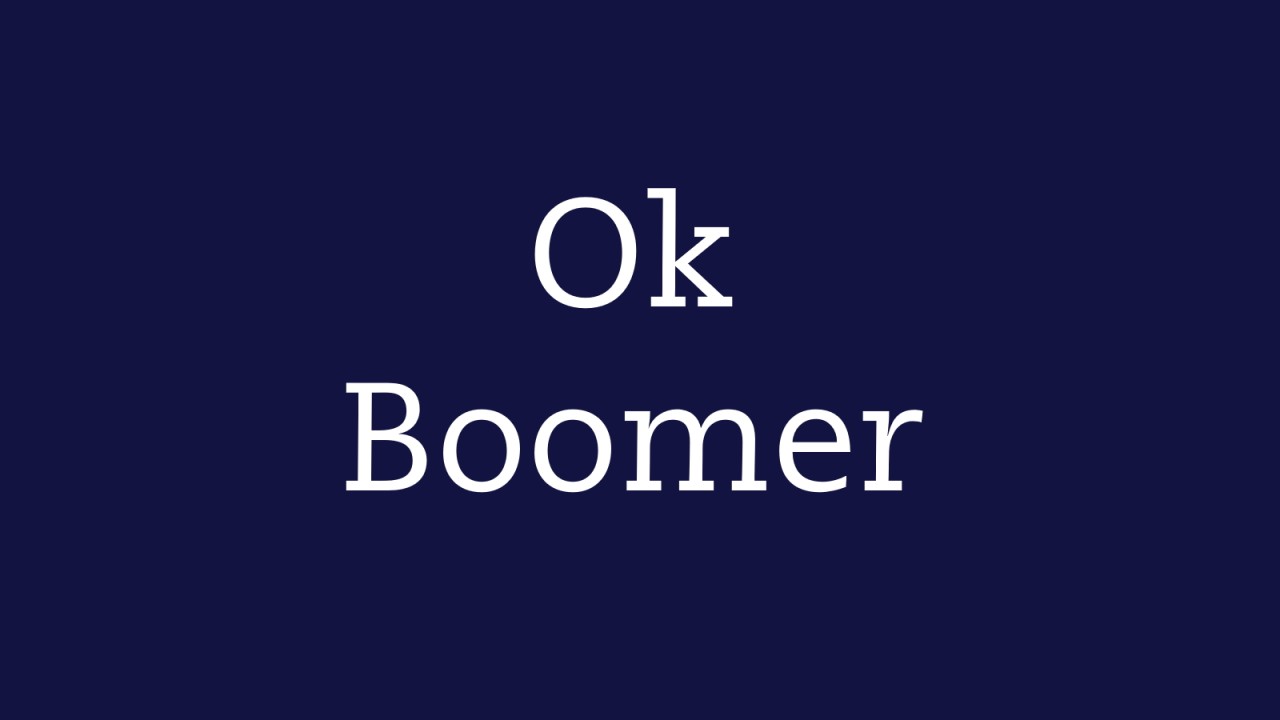
Gen Z to Legacy Sports: OK Boomer
It wasn't supposed to evolve this way when the decade started 10 years ago – at least in the minds (or maybe imaginations?) of legacy sports businesses. New and rapidly expanding social media channels, ever-improving smartphones and apps, fun new wearable devices and helpful proximity tech, more engaged and empowered fans, instant global reach. . . it all added it up to a sense of potential that felt so exciting, so promising. Granted, everyone knew that there would be casualties along the way, as there always are in disrupted markets. But that of course depends on where you were in the ecosystem. Big sports leagues, for example, would be fine – traditional sports as a cultural/entertainment institution were only going to get bigger and more popular. Right?
Well, a funny thing happened on the way to the promised land: a new generation – the first one that was composed of true digital natives – started coming of age. And as the decade progressed and that initial blurry picture started to come into sharper focus, we started to see evidence that many of them had no intention or even inclination to conform to the image we had in mind. It was a slow burn. A 2018 Whistle survey of Gen Z males 13-21 indicated that more than half preferred non-traditional sports over the big five – football, basketball, baseball, soccer & hockey; 56% thought that non-traditional sports were "more relevant to their generation." Related, in 2018 Google published a blog post entitled 3 Ways Online Video is Changing What It Means To Be A Sports Fan, which noted that "sports fans increasingly want to get the good stuff," and that "sports fans want to watch on their own terms." Even the NY Post published an article on the topic – Inside the Sports World’s ‘Generation Z’ Challenge.
So it's becoming evident that a common Gen Z reaction to traditional sports, whose games are usually 2 - 3.5 hours long with a ridiculous number of ads and interruptions (Sports, Interrupted) may simply be TL;DW – too long; don't watch. Or perhaps TA;OO – thanks anyway; other options. (TV sports ratings declines for younger demos confirm this.) However, that doesn't necessarily mean that they're not becoming fans – many do. It's just that traditional fandom (typically, fealty to teams, consumption of full games, ads and all) is being redefined and diluted. For the younger generations, fandom, thanks to the rise of the Highlights Industrial Complex, may be manifested through the casual consumption of alternative content, such as highlights, GIFs, fantasy/betting info, interviews, i.e. a plethora of things that, as David Stern noted, are "enabling fans to watch [sports] less." (Thanks YouTube, Instagram, Facebook, Twitter, Snapchat, and TikTok!) Since the key economic driver of the business is television and all the ad revenue it generates, that has the potential to be a big problem as Gen Z ages and Gen Alpha matures.
So as we enter the 2020s – a decade that may well be more disruptive than any since the dawn of digital – it appears that these factors. . .
- A long tail of almost infinite content options, often more in the "feed" mode & less in the "need" mode
- Gen Z's preference for ubiquitous short-form media over long-form anything
- Gen Z's aversion to traditional interruptive advertising – :30 spots, commercial pods
. . . are creating an unprecedented challenge for a business that has traditionally had the luxury of the almost-automatic creation of bankable fan/customer bases – and attendant behavior – from generation to generation. That's no longer a safe assumption; the conceit is ending, which means self-disruption will be essential. Over the course of the next decade, a lot will change and the business may look very different 10 years from now. As Yogi Berra said, "The future ain't what it used to be."
Part 2 of this essay to be published in December 2029.
@ConvergenceTR

And then there's the live professional sports experience from a reformed season ticket holder for the Patriots, Red Sox and Celtics: in stadium ad bombing, overpriced seats especially for the first two and playoff pricing for all. Throw in lousy overpriced food and parking at 50-100 and voila no longer holding those season tickets. Forget baseball, it's hopeless. For the others Just DVR, ignore the outside game updates and fast forward.
Sales Leadership and Business Development in Digital / Shopper / Promotion Marketing
4ySo well said as usual Tom! I’d say you’ve made it fairly clear that anyone in the sports media biz that’s hoping for a return to the good old days has got another thing coming. However, as an affirmed boomer I will likely continue to do my part in my household, despite the fact that the product the local NY teams are putting on is often unwatchable! Old habits (and team allegiances) die hard...
Global Sports & Entertainment
4yWell done Tom...excellent decade view...would add the specter of sports gambling to the mix of behavioral influences (i.e. sports consumption)